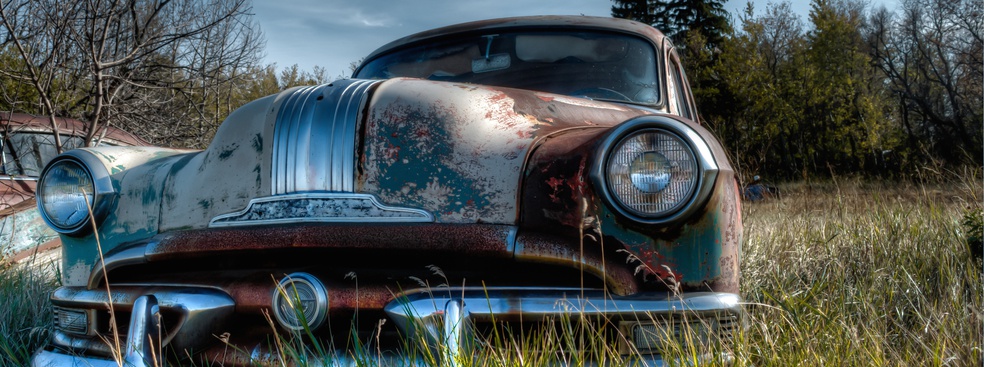Prof. Delphine Dion, Professor of Marketing at ESSEC Business School, introduces the concept of “sleeping beauties*” and looks at the strategies firms can use to turn brand heritage into a powerful premise for customer experience and customer sales
*From the paper: Reviving sleeping beauty brands by rearticulating brand heritage, Journal of Business Research, 2016, by Prof. Delphine Dion, Professor of Marketing at ESSEC Business School and Gérald Mazzalovo, Center for Engaged Management Research (CEMR), Université Paris-Dauphine.
The dream phase
There are certain products and services that exude legend. Peering through a window display, flicking through a brochure, our senses are aroused and our emotions seduced as our imagination sweeps us off on a journey of colors and smells, touch, images, and memories. It could be a watch, guitar, car, hotel, bag or ring. The dream remains long after the buy.
For established brands, service providers, or hopeful would-be’s, heritage – and the legend it bears – is something that ensures durable sales and lasting customer loyalty others can only dream of. Heritage is indeed crucial, especially in the luxury segments. Because of its elements of authenticity and uniqueness, brands emphasize their history as a key component of their identity.
The question remains of whether your company already possesses a brand or a product with heritage. If it doesn’t – then not all is lost: just make it happen. The brands Roger Vivier, the Citroën DS, Vionnet, Orient Express, Schiaparelli, and Moynat the leather goods maker are all examples. How? By either transforming a brand into a heritage brand or reviving a “sleeping beauty” – a brand that is no longer active on the market but which retains potential brand equity that can be conjured up in the minds of consumers by rearticulating the brand's heritage.
Waken the beauty: Don’t get personal, make it collective
To analyze the revival of sleeping beauties, Prof. Delphine Dion and Gérald Mazzalovo interviewed twenty executives, managers and experts working on both luxury and mass-market sleeping beauty reactivation strategies across several product categories including leather, fashion, travel, automotive and watches. Their findings point towards two different types of sleeping beauty characterized by their specific brand awareness: those that have kept a strong market reputation among the general public and others which retain no reputation in the market.
For the former, their reputation persists because they are embedded in individual and/or collective memories and for the latter, after many years out of the market, almost nobody remembers them. It would be tempting to go for the brand that is still recognized, still embedded in an individual’s mind. After all, trying to sell something on a heritage that nobody remembers is just asking for failure, right? But, no – the surprising thing is that the Prof. Dion’s studies tend to prove the opposite. Brand awareness can be a handicap in reviving a sleeping beauty, and the key element is the ability to embed the brand not in individual memory but in a collective memory. Indeed, the advantage of reviving a forgotten brand lies in its very lack of reputation: it allows for more leeway in defining the brand strategy, means that there is nothing to erase and that marketing managers can select the most relevant features from the brand’s heritage. It also avoids the risk of consumer resistance and criticism that may occur in the face of re-branding a heritage brand to suit modern use. The Orient Express is a good example, states Dion. Designing an updated version of the train would cause extensive criticism because it would make the meaning of the brand far-removed from consumer expectations. Likewise, Volkswagen faced such a situation when they launched the new Beetle in 1997 and now, Land Rover is similarly affected, having to withdraw the re-design (and the several years of work behind it) of its legendary Defender following a general outcry among its fans that the brand was betraying its roots. In short, the sleeping beauties with the greatest potential to succeed are not always the brands with the strongest brand awareness.
Indeed, most sleeping beauties retain no reputation in the market. Most were not icons of a prior historical period; they do not evoke personal memories, and shared associations are either non-existent or limited to a small group of experts and enthusiasts. However, these sleeping beauties can be revived even if they were never an important icon, and even if they do not evoke vivid, relevant associations for particular consumers.
In the case of forgotten brands, marketing managers cannot draw on personal nostalgia for memories from an individual's past, but only on shared nostalgia linked to historical events or a specific period in history. It is even possible to reactivate a brand without many archives. Moynat specialized in leather goods, founded in 1849 and closed in 1976, was such a brand. Despite the difficulty of lack of personal identification with it, managers succeeded in reactivating the brand by embedding it in a collective memory via reviving the belle époque era in Paris of the late 19th and early 20th centuries. Consequently, the key factor in reviving sleeping beauties is the way the brand can resonate with the collective memory. And by inserting the brand into the collective memory, managers can transform a brand – even a forgotten brand that has “lost its memory” – into a heritage brand.
Transform the dream: How to create brand legend
So you’ve found your dream brand or heritage product, you know that hedging your bets on a “forgotten brand” works easiest, and now you are faced with transforming the brand into a legend through appealing to collective memory. All you have to do is…use appropriate strategies and tactics to get it on the shelves and selling at a premium price.
From her analysis, Professor Dion asserts that marketing professionals aim for a number of upstream factors before committing to strategy when reviving sleeping beauties. With legend comes the ability to inspire the customer and this involves initially looking for aesthetic and symbolic dimensions of the brand from which to draw on and focusing on product features such as design, technology and know-how. They also delve into the “people dimension” related to the brand’s history and try to identify founding-fathers, iconic clients or historical personalities that used it. Another aspect is identifying places and locations that customers can collectively relate to such as towns, cities or even the country in which the brand is rooted. And finally, anchoring the sleeping beauty in events can be useful – be they related to the brand history, past competitors who are now market leaders, or historical events – the crowning of a monarch, the first flight over the Atlantic or the landing on the moon, for example.
Delphine Dion also identifies three main branding strategies to revive sleeping beauties – brand revitalization, brand copying and retro-branding – though she is careful to mention that they differ in the way they associate the brand with time.
- Brand revitalization focuses on the present. The goal is to modernize the brand without placing its heritage at the core of brand identity. This approach transforms perceptions of an outdated brand from the past into a contemporary brand, with the emphasis lying not on the history of the brand but rather its longevity – the success of the brand in the long run. According to Dion, the only important element to highlight is being able to add “Since….”plus the founding date to the brand motto. Dubois & Fils, Switzerland’s oldest watchmaker, for example, has deliberately broken away from the old brand and only retains the statement “Swiss watches since 1785”.
- Brand copying focuses on the past and consists in copying an old brand without updating it. Created in 1961 and lying dormant since the 1990s, Courrèges was revived five years ago and produces iconic clothing designs from the 1960s. This strategy, however, carries a risk in that exact reproductions may not meet today’s standards of performance, operation or taste. Imagine, for example, building a replica of a 1920s luxury train – for today’s travellers used to whooshing past landscapes in air-conditioned, filtered silence it would most probably be like sitting in a bumpy cart pulled by a tractor. All-in-all, brand copying may be considered a short-term strategy – the style may not stay in fashion for long.
- Retrobranding is the third strategy used to revive sleeping beauties. This, too, associates the brand with the past but harmonizes it with the present through combining old-fashioned shapes with up-to-date technology and functions. It modernizes a brand, refreshing traditional sources of brand equity and creating new ones to transform perceptions of an outdated brand from the past into a contemporary brand. Caffrey's Irish Ale and the British brand, Burberry, are good examples here, the former blending cutting-edge brewing technology with old Celtic iconography to produce a brand-new, old-fashioned beverage, Burberry’s focusing on innovating core luxury heritage products and keeping them at the heart of their operations.
A question we may ask of dreams: Are you real?
While brands concerned by revival strategies do not need to be authentic, and can be invented to a degree, revival does alter brand properties physically and symbolically. There is therefore a need to make your brand as authentic and as legitimate as possible in order to ensure success. The issue of heritage authenticity is challenging not only for cult brands, but also for brands which retain very little reputation in the market and are largely forgotten after many years out of the public eye.
The first step is thus to collect both tangible and intangible features that will authenticate the brand heritage, states Delphine Dion. These authenticating objects are both proof of, and links with, the brand's past activity and are integrated into the brand story and the customer experience. Storytelling is a must. In the revival of Citroën’s DS range, for example, the customer showroom journey shows the esthetic, technical and symbolic links between the past cars and the new ones. Moreover, credibility is gained through having your product legitimized by authorities on the matter – cultural intermediaries with a publicly recognized capacity to appreciate the value of a heritage – including people in the know (journalists), opinion leaders (celebrities, bloggers), or those holding appropriate qualifications (museum curators, historians, academics, etc.). Pressed to answer the question whether legends are real, a multitude of customers experiencing the delight of spending their money on a heritage brand product will invariably say – Well, yes.
Useful links:
- Read the full research paper "Reviving Sleeping Beauty Brands by Rearticulating Brand Heritage" (D. Dion, G. Mazzalovo), Journal of Business Research
- Principes de marketing. (with E. Le Nagard‑Assayag, T. Lardinoit, R. Butori, F. Oble). 13th edition. Paris (France) : Dunod, 2016
- A la recherche du consommateur de nouvelles techniques pour étudier les clients. Paris (France) : Dunod, 2008
- La distribution. (with I. Sueur). Paris (France) : Dunod, 2006.









